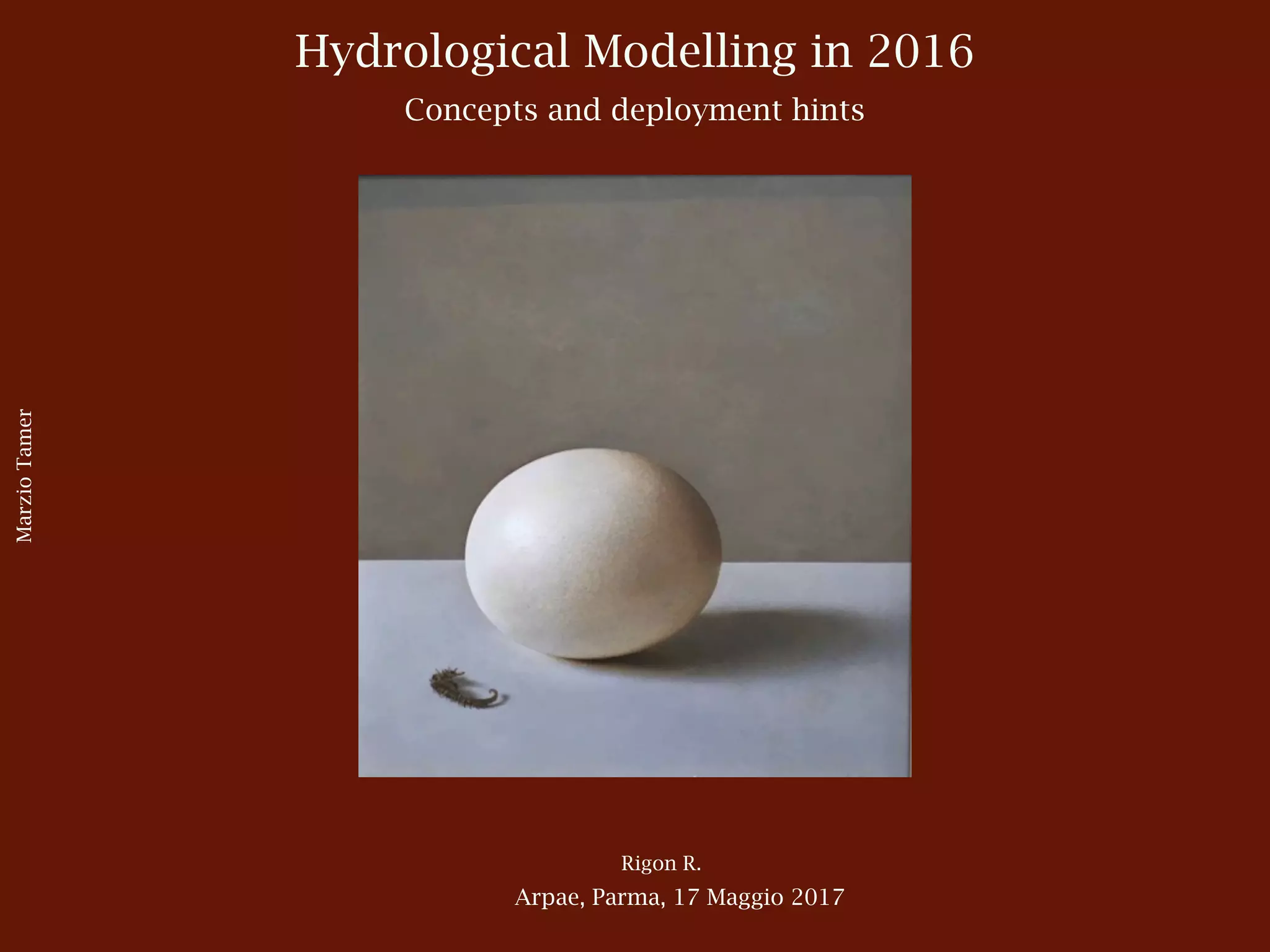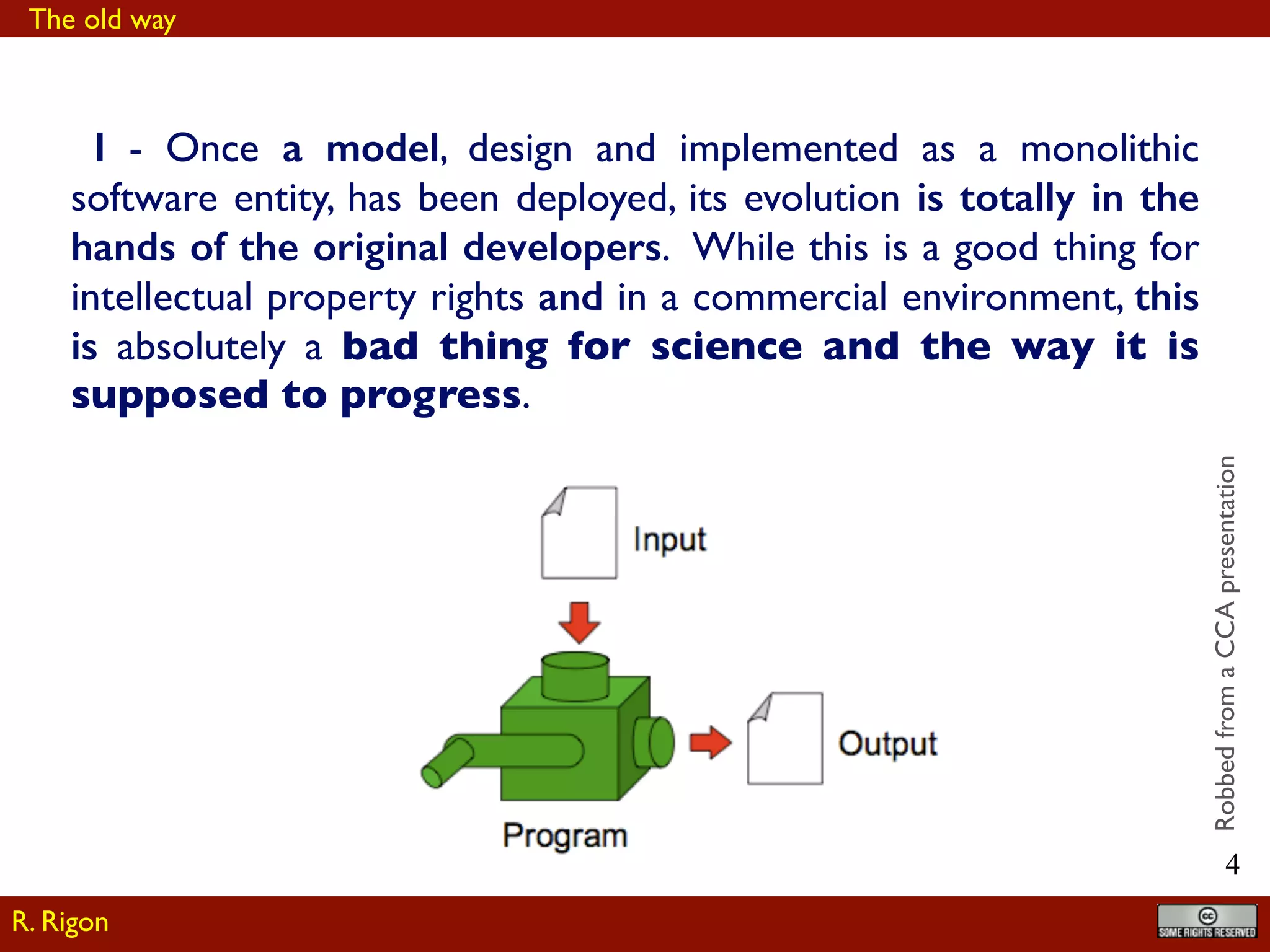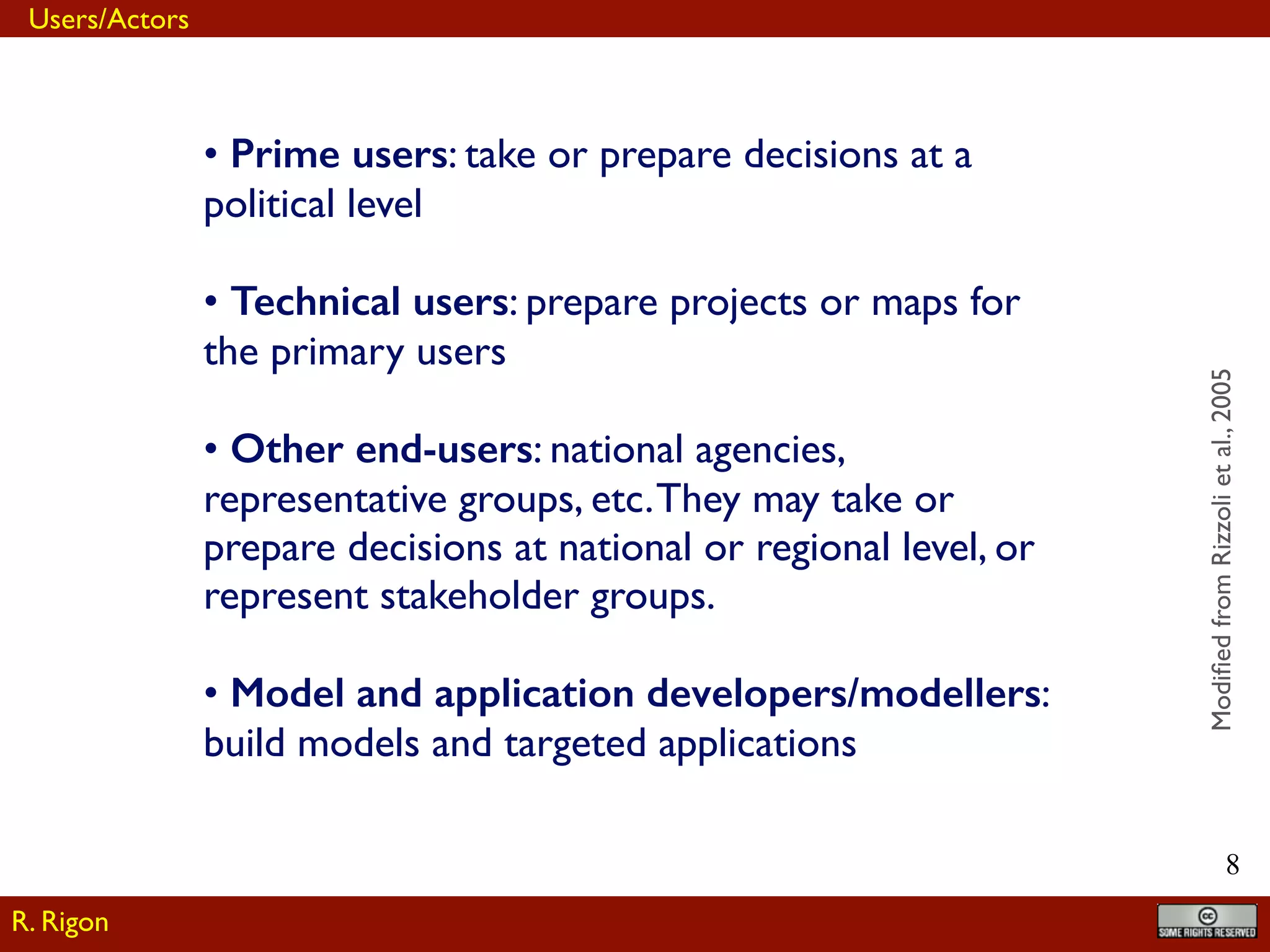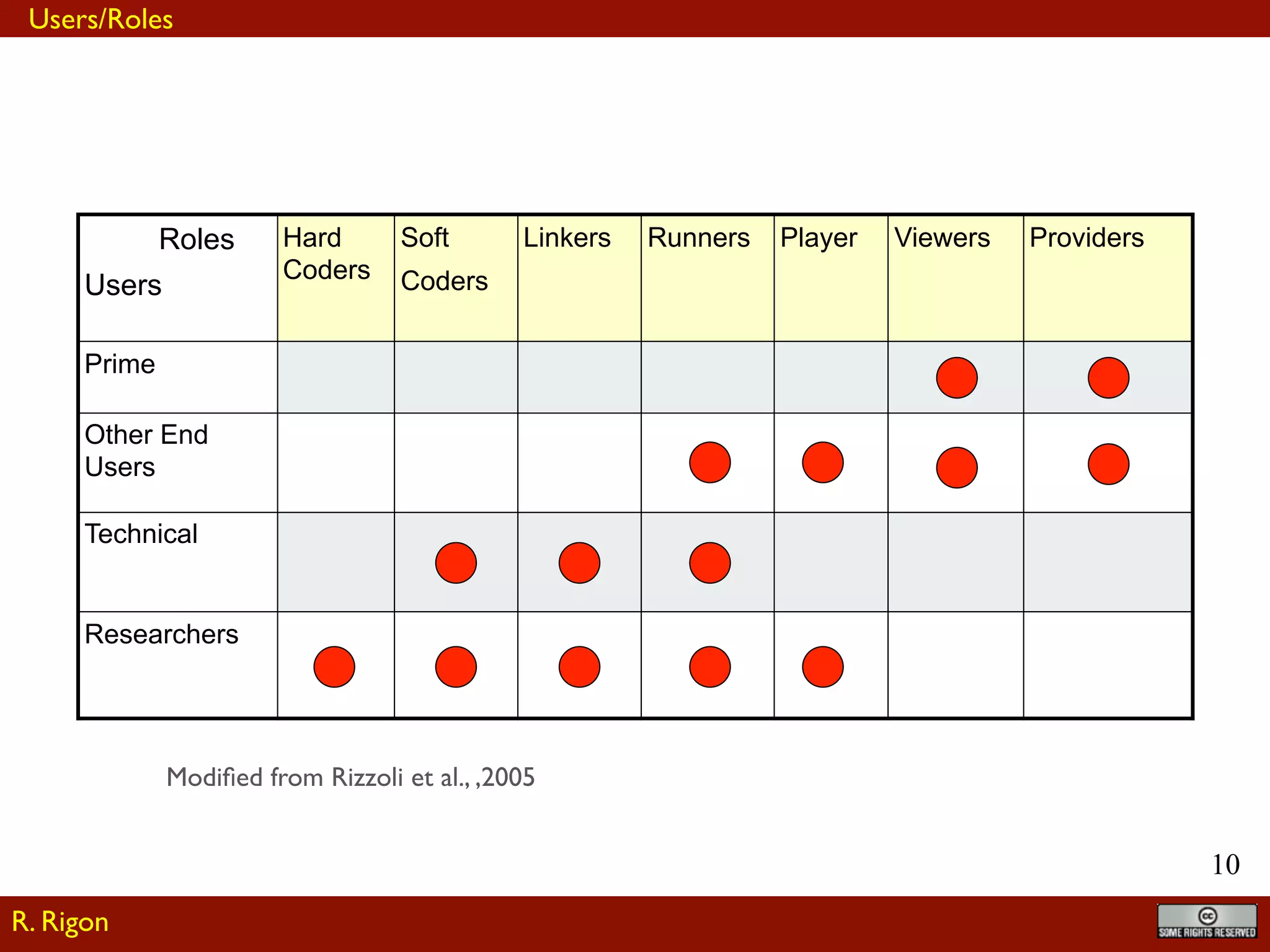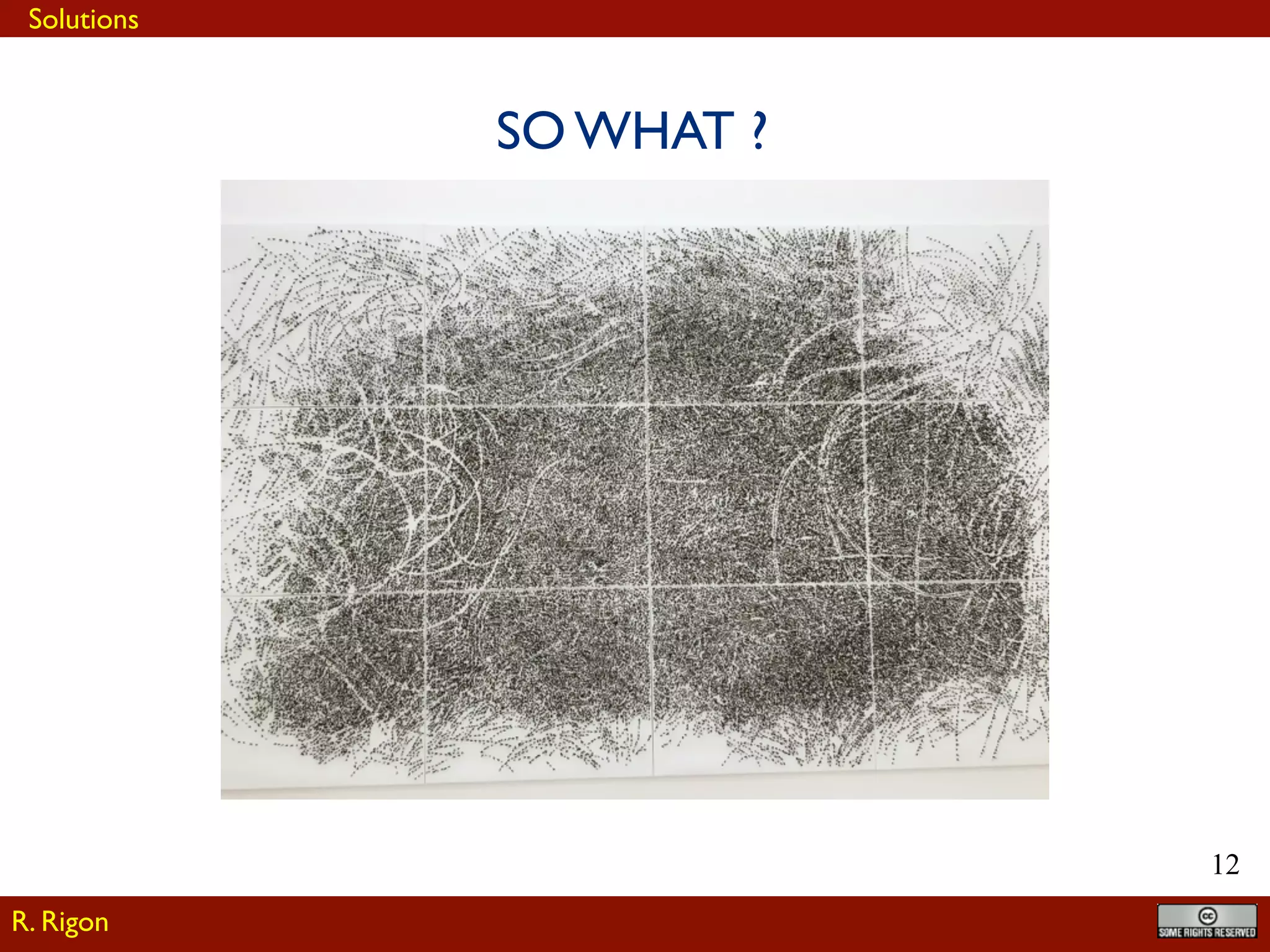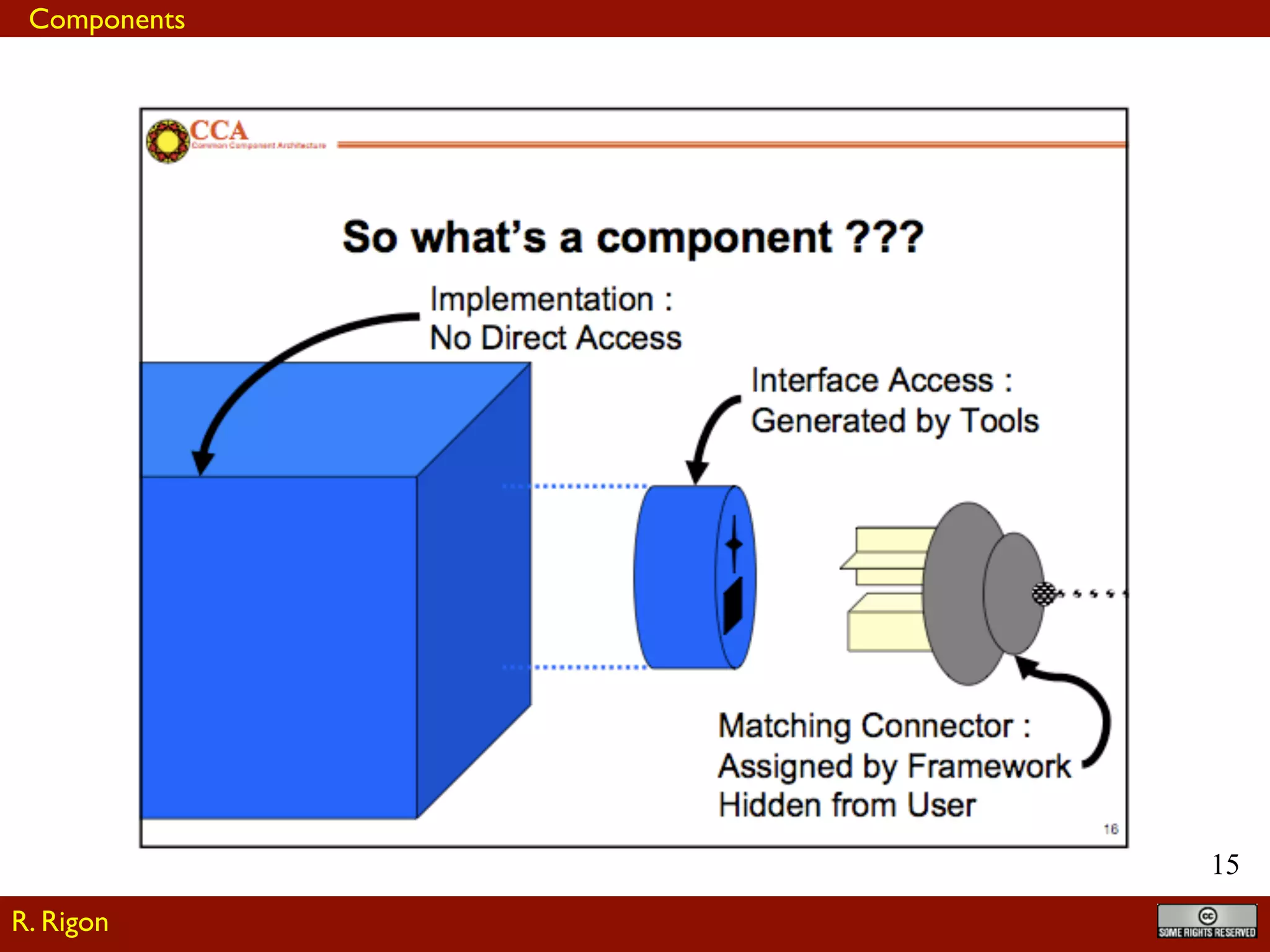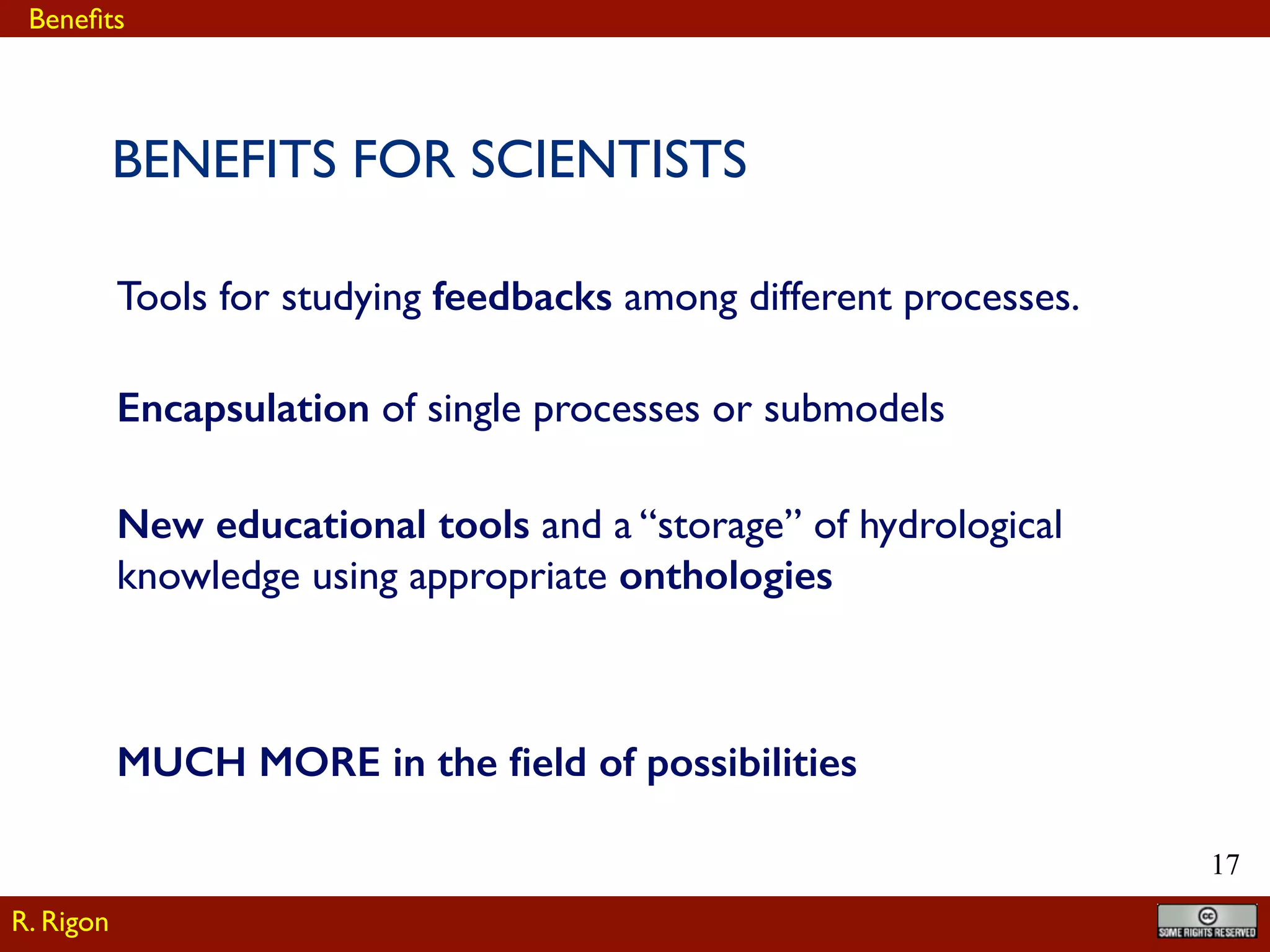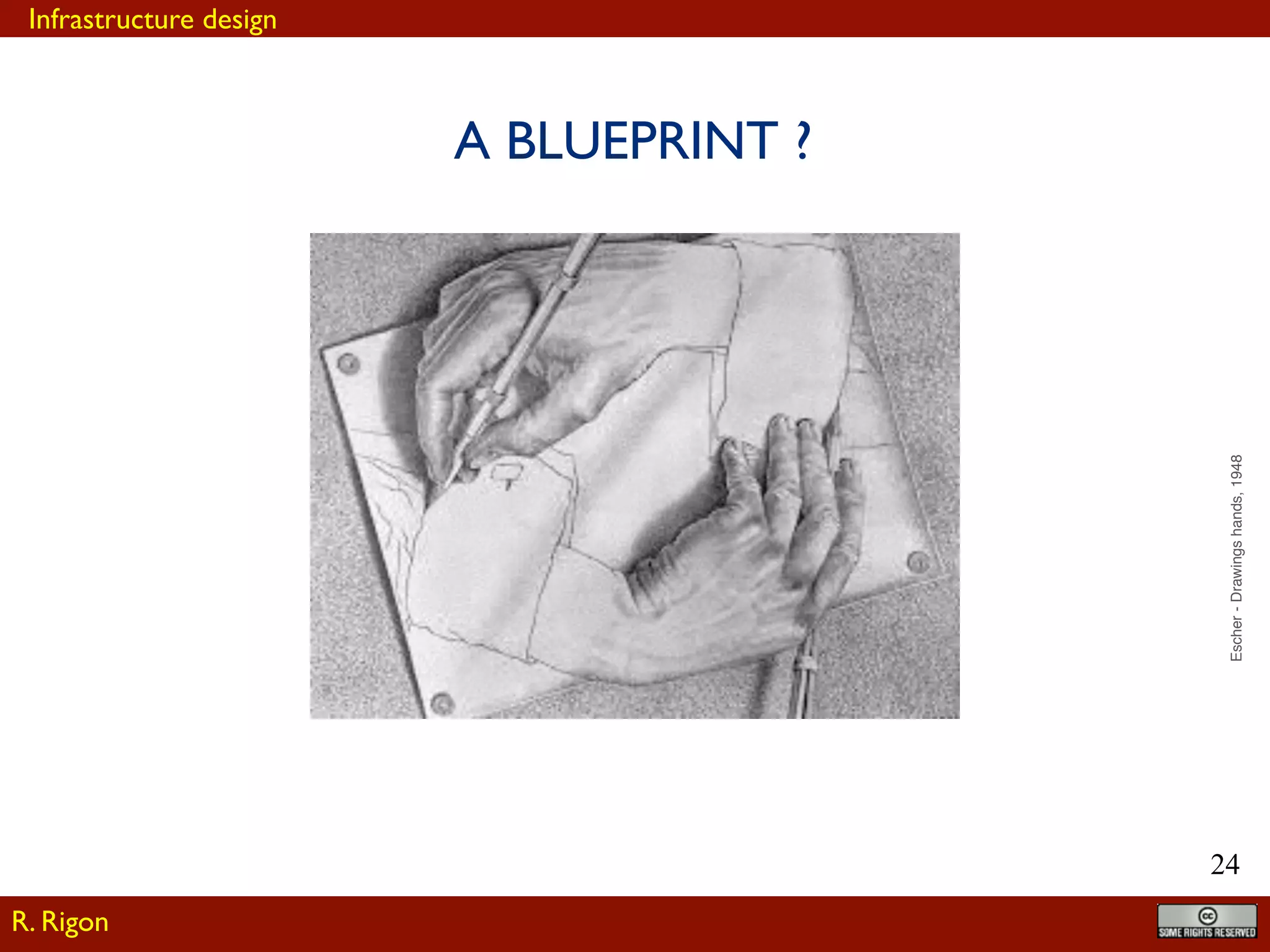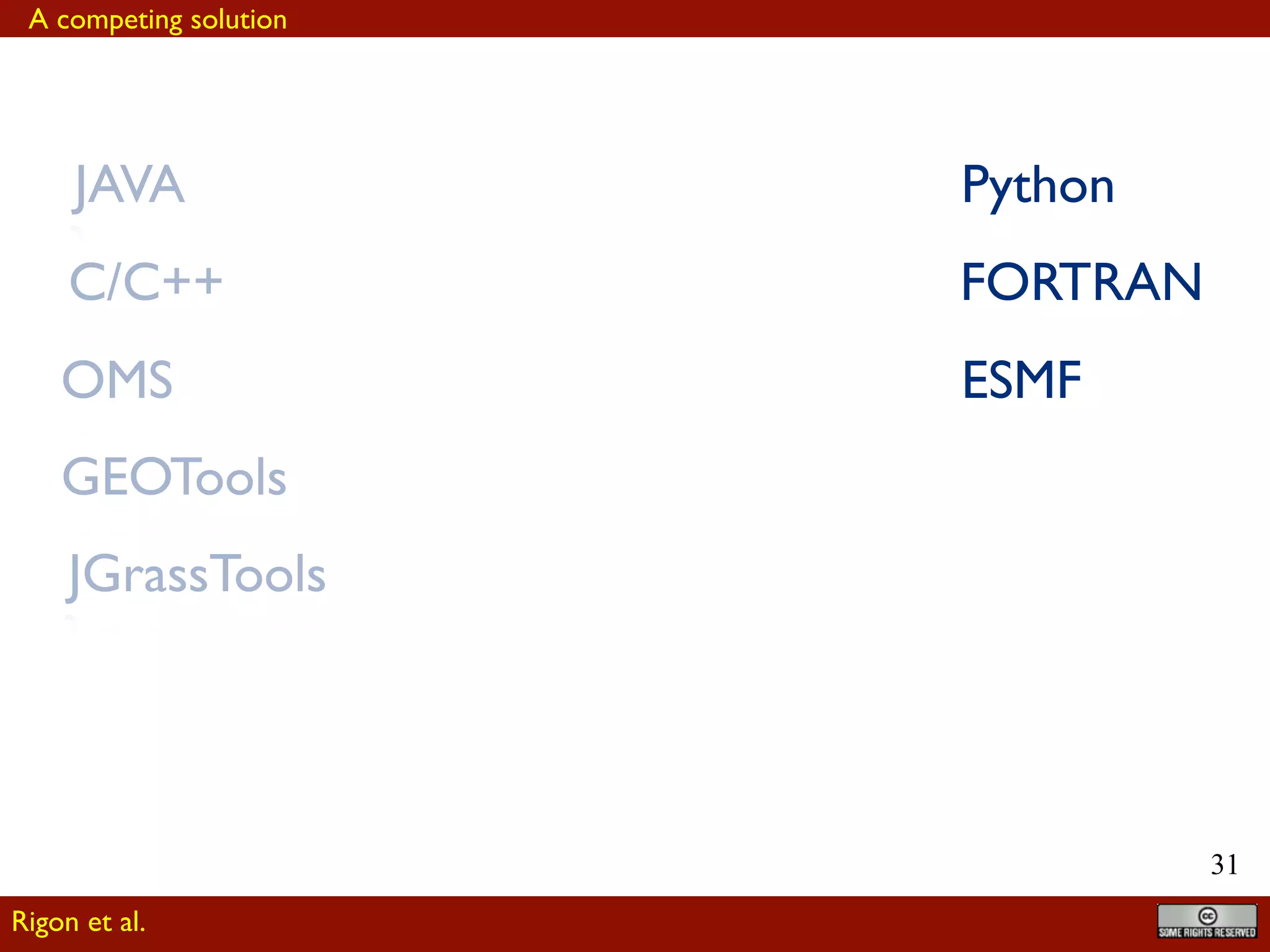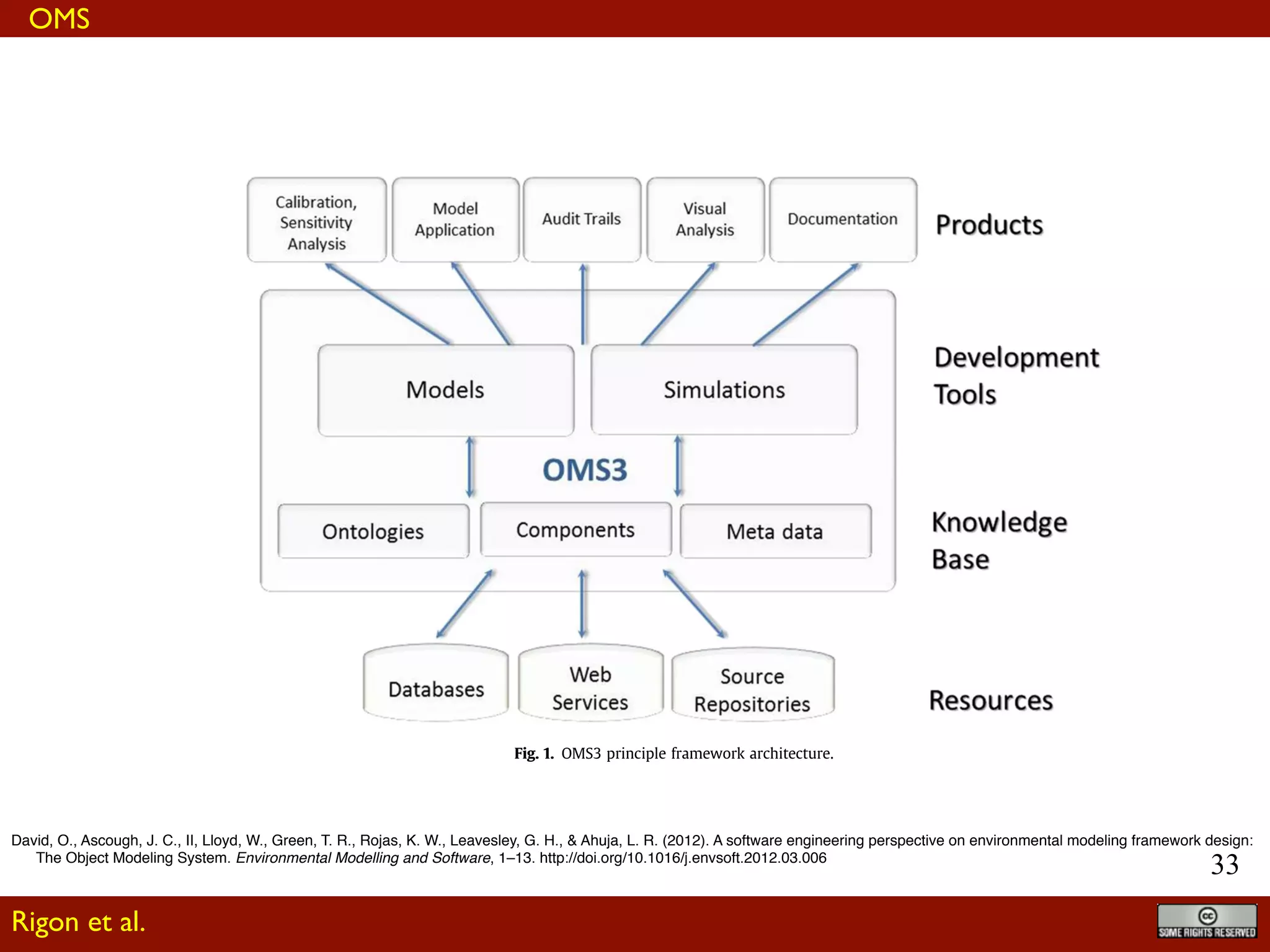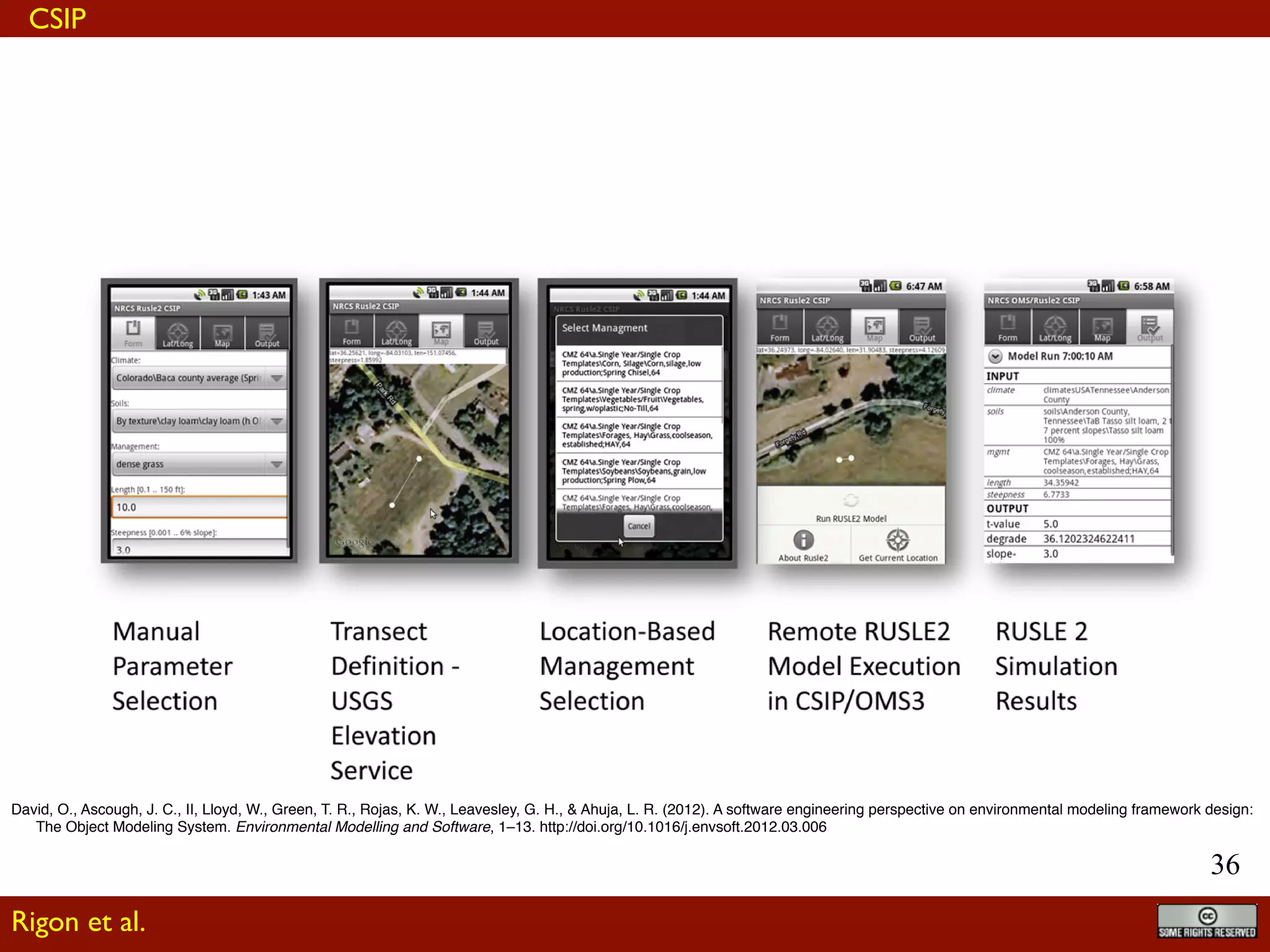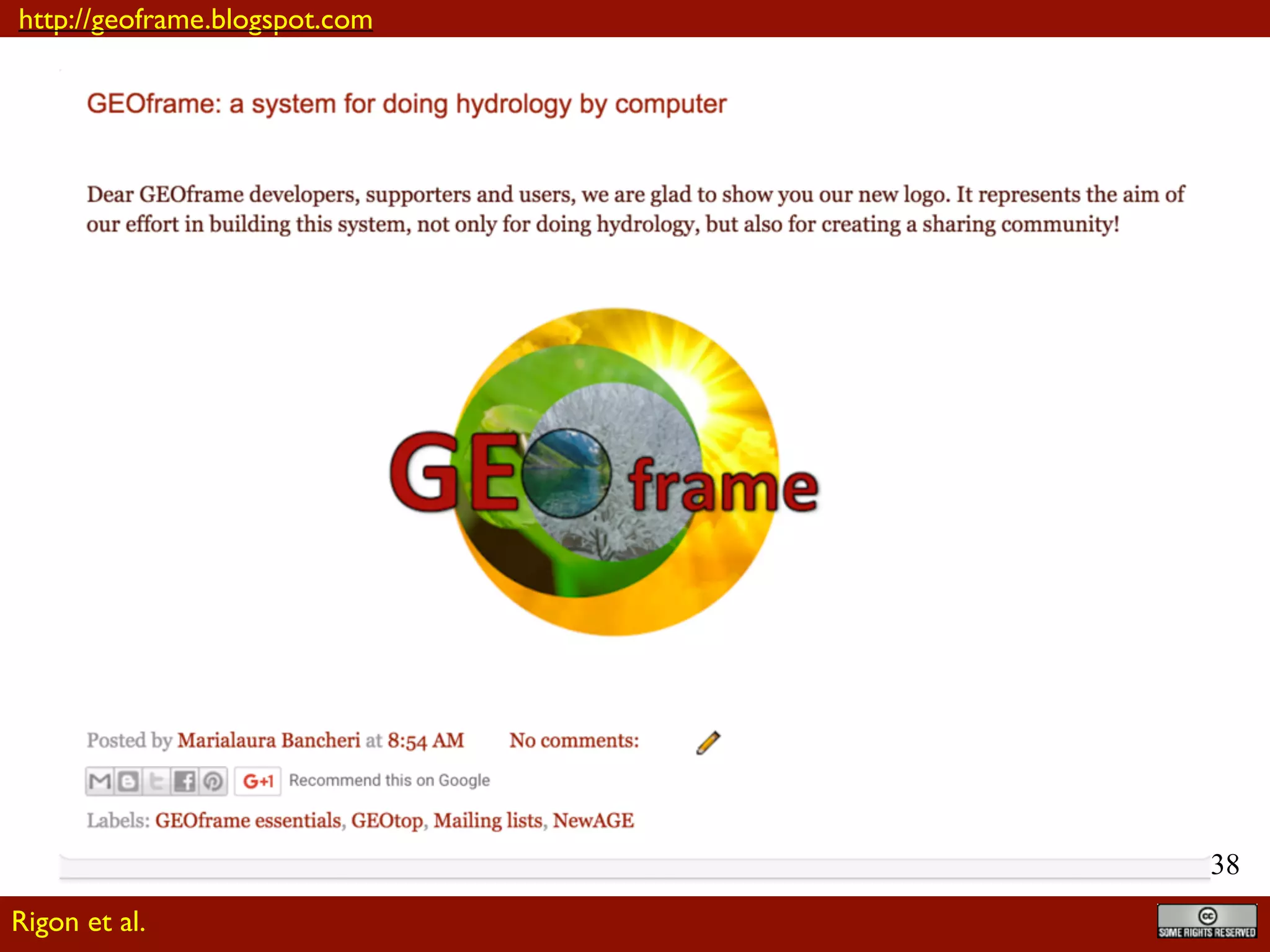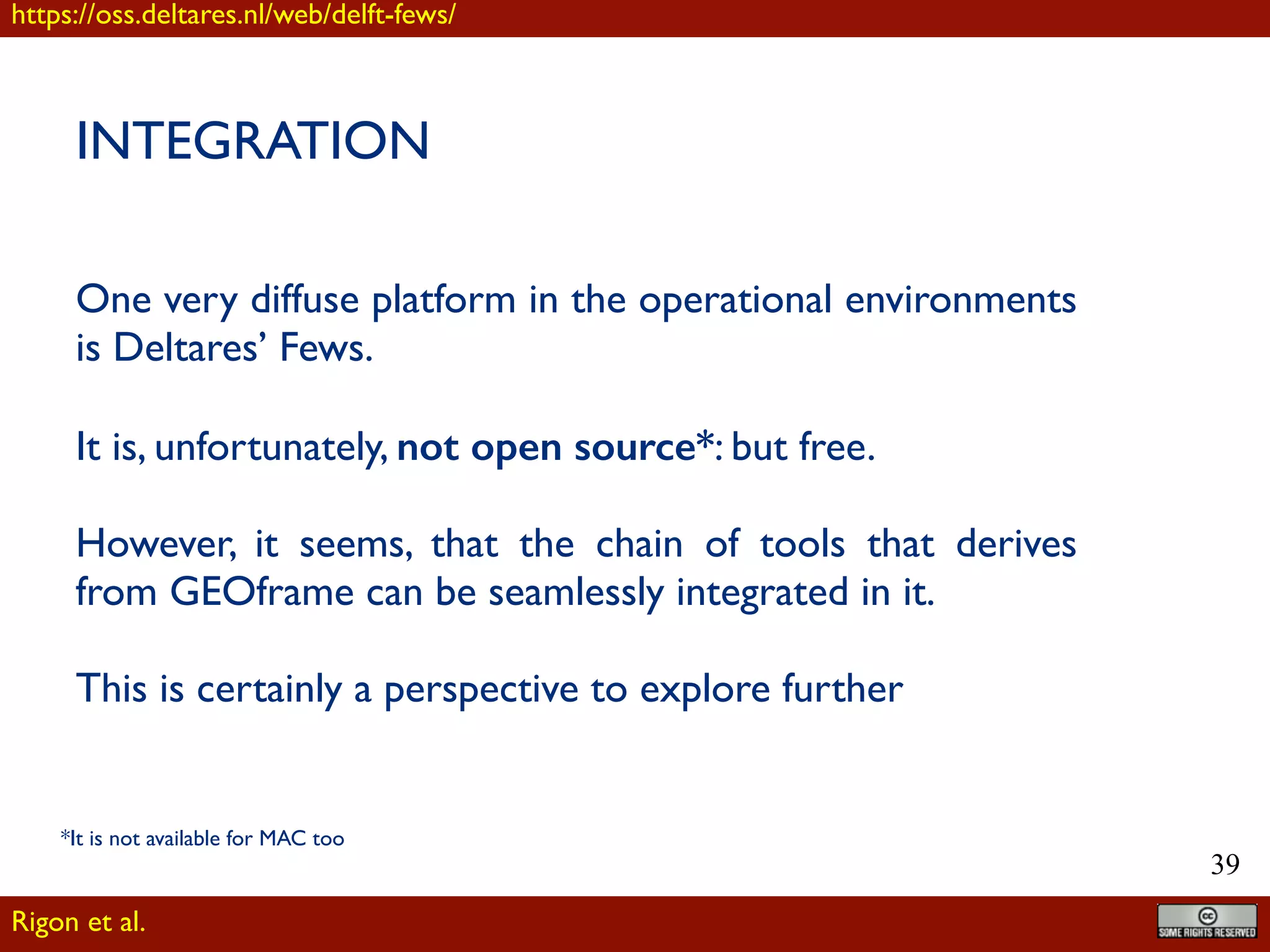The document discusses the evolution of hydrological modeling, emphasizing the need for open-source models and the importance of software engineering principles in developing flexible and reusable modeling frameworks. It highlights the challenges of traditional monolithic models, proposes solutions such as object-oriented and component-oriented development, and outlines various stakeholders in the modeling process. The document also reviews existing modeling infrastructures and suggests prerequisites for an effective modeling environment.
